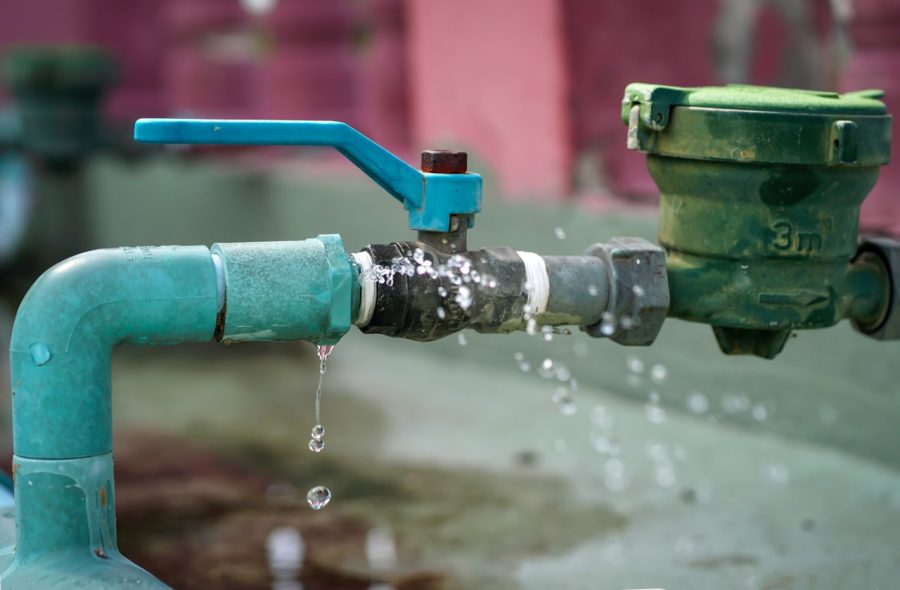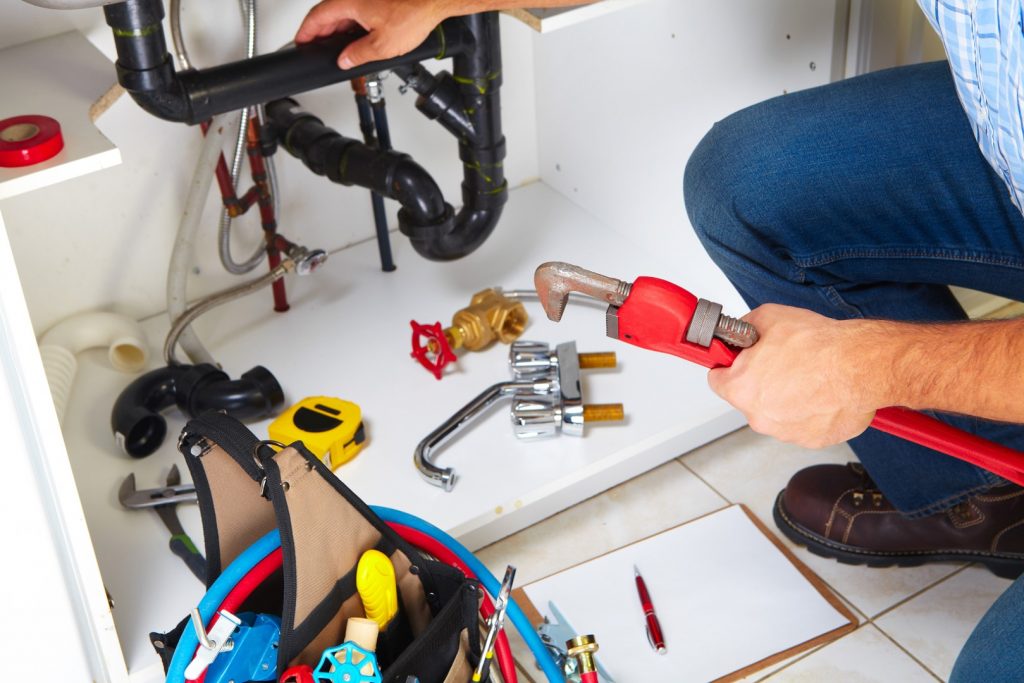Solving Plumbing Issues in Older Homes: A Comprehensive Guide
Solving Plumbing Issues in Older Homes: A Comprehensive Guide
Blog Article
This great article in the next paragraphs involving Common Plumbing Problems in Older Homes is definitely motivating. Give it a go and draw your own personal ideas.

Older homes usually feature appeal, character, and background, however they can also bring a host of pipes issues. Whether you're managing maturing pipes, low tide pressure, or leakages, understanding how to attend to these typical problems is critical to preserving a secure and practical home. In this overview, we'll check out the common pipes difficulties encountered by older homes and offer sensible options to maintain your plumbing in top form.
Understanding Typical Pipes Problems
Aging Pipelines
One of one of the most common concerns in older homes is aging pipelines. Relying on the age in which your home was constructed, the pipes could be made from materials that have actually deteriorated gradually, such as galvanized steel, cast iron, or perhaps lead. These materials can wear away, become breakable, or develop leaks, bring about water damage and prospective carcinogen.
Water High Quality Screening
Older pipelines can affect the high quality of your water. Conduct a water top quality test to check for impurities such as lead, rust, or various other pollutants that may be introduced by maturing pipes.
Solutions for Usual Pipes Concerns
Replacing Aging Pipes
If your home has old, degrading pipelines, consider replacing them with modern-day products like copper or PEX. This can be a significant investment, however it will certainly protect against future issues and enhance the safety and security and reliability of your plumbing system.
Repairing Low Water Stress
To deal with low tide pressure, beginning by cleaning or replacing old components and removing mineral build-up in the pipelines. If the trouble lingers, it might be needed to change sections of rusty pipes.
Repairing and Replacing Leaking Pipelines
For small leaks, you can utilize pipe clamps or epoxy putty as a short-lived solution. However, it's ideal to change leaking pipes completely to stay clear of additional damages.
Updating Components
Updating old fixtures to contemporary, water-efficient designs can enhance your home's pipes efficiency and minimize water usage. Search for fixtures with the WaterSense label for the best effectiveness.
Taking Care Of Pipe Corrosion
If your pipes are corroded, changing them with corrosion-resistant products like copper, PVC, or PEX is the very best remedy. Normal assessments and water high quality maintenance can help prevent further corrosion.
Low Water Stress
If you're experiencing low tide pressure, it could be as a result of natural resources, deterioration inside the pipelines, or old fixtures that are no longer functioning successfully. This can be a significant hassle, especially in areas like showers and sinks.
Dripping Pipes
Leaks are an additional constant problem in older homes, frequently caused by corroded or damaged pipelines. Also little leaks can cause considerable water damages, mold growth, and enhanced water expenses otherwise resolved immediately.
Obsolete Fixtures
Outdated plumbing components such as faucets, toilets, and showerheads not just look old however might likewise be much less efficient, vulnerable to leakages, or inappropriate with modern-day plumbing requirements.
Pipe Rust
Deterioration is a typical issue in older pipes, especially those made from galvanized steel or cast iron. Rusty pipes can restrict water circulation, cause staining, and ultimately lead to leaks or pipeline bursts.
Assessing the Condition of Your Plumbing
Checking Noticeable Pipes
Start by checking any noticeable pipes in your house, such as those in basements, crawl spaces, or under sinks. Search for signs of corrosion, leaks, or rust, which can indicate underlying issues.
Checking for Leaks
Check for leaks by inspecting locations around taps, commodes, and under sinks. You can also check your water meter before and after a duration of no water make use of to discover surprise leaks.
When to Call an Expert
While some pipes issues can be handled with DIY services, there are times when it's finest to hire a specialist. If you're handling major leakages, considerable rust, or are unclear regarding the condition of your pipelines, an accredited plumbing can offer professional assessment and repair service.
Preventive Maintenance Tips
Regular Assessments
Regularly examine your pipes system for indications of wear and tear. Catching problems early can stop expensive repairs down the line.
Water Pressure Law
Ensure your water stress is within the advised range to prevent stressing your pipes and components. A plumbing professional can set up a pressure regulator if needed.
Water Top Quality Upkeep
Install water filters or conditioners if your water high quality is poor. This can secure your pipes and fixtures from damage caused by tough water or impurities.
Proactive Pipe Substitute
If your home has older pipelines, think about positive replacement prior to significant concerns develop. This can save you from emergency repairs and water damages.
Final thought
Taking care of plumbing concerns in older homes needs a combination of vigilance, preventive upkeep, and timely upgrades. By understanding the common challenges and recognizing when to seek professional aid, you can ensure your plumbing system continues to be useful and trusted for many years to come.
Common Plumbing Problems in Older Homes
Older homes have a ton of character from the antique brass faucets, clawfoot tubs, and colorful tile to the Dutch doors, transom windows, and archways, there s a lot to love. Unfortunately, that character often includes old plumbing that s past its prime and isn t fit to support modern appliances.
If you own an older home and are suspicious about strange noises (ghosts?), smells, leaks, or frequent clogs in your plumbing, it's possible that your home s old age is to blame.
Learn more about the most common old house plumbing problems, and what can be done to fix them!
What Are the Most Common Plumbing Problems in Old Houses?
Old, corroded piping. Most older pipes are made of material that corrodes and rusts more easily. Even if over the years some of that piping was replaced with better material, the rest may be damaged or repaired with lower-quality material. Though expensive, it may be the best option to re-pipe your plumbing especially if there s rust or lead in your water. Slow drains. This could be the result of many issues, but most likely because of pipe bellies. These are sags in your drainpipes that happen as your home settles and shifts downward over time, putting pressure on your pipes and creating negative slopes. This can restrict water from flowing correctly through them and result in slow drains. Frequent clogging. As you might expect, pipe bellies can also lead to frequent clogging. Another reason for clogging could be due to buildup over time, or blockages from sediment and root growth. Scheduling a drain inspection and drain unclogging service can eliminate this issue. Damaged or failing sewer lines. Old homes are more likely to have foundational shifts and tree root overgrowth. This can put a lot of pressure on and in your sewer lines, leading to damage. Another common reason for failed sewer lines is because of modern appliance upgrades. Newer appliances put more strain on sewer lines, and if your old pipes aren t equipped to handle this, it can result in damage. If you have any wastewater backup, slow drains, or soft spots in your yard, you may need sewer line replacement. Worn or outdated fixtures. Plumbing fixtures old or new aren t built to last forever. Even if your fixtures seem like they re working well, it s best to check the wear on any internal parts. Minor wear and tear over time can lead to more costly leaks and plumbing issues. Our experts can perform a plumbing inspection for any part of your home s plumbing. Improper installations or repairs. Whether your plumbing was installed a hundred years ago, installed incorrectly, repaired incorrectly, or repaired with outdated materials, this can affect the long-term stability of your plumbing. In older homes especially, having your plumbing inspected is vital to preventing damage. What Are Old Plumbing Pipes Made Of?
Galvanized steel. Most often used between the 1930s and the 1980s, this piping material was discovered later in the 1990s to be prone to rust and corrosion, releasing lead into the water, which is dangerous to consume. Copper. Most homes built around the 1960s are likely to have copper piping. Unlike galvanized steel, copper is one of the most durable materials for plumbing pipes. The issue with this material is the risk of lead, which could be present in the piping itself or the solder applied to the joints and fittings. PVC. This material is still used today and was often used in older homes where piping was replaced because it was easy and inexpensive to install. PVC is also very durable, lead-free, resistant to rust and corrosion, and handles high water pressure well. The downside is that hot water can make it warp. How to Fix Plumbing Problems in Old Homes
Have your plumbing inspected. Before you begin or schedule any type of repair, schedule a plumbing inspection. An expert will be able to properly identify all the issues in your plumbing and the best solution to avoid further damage. Get your plumbing repaired or replaced as needed. Depending on the issues found with your plumbing, you may need minor repairs or larger replacements. Make sure these issues are addressed before you tackle any smaller issues. Remove any clogs or buildup. It s likely your old pipes are clogged with debris, mineral buildup, hair, tree roots, and more. Having your drainpipes cleaned will improve overall drainage and help prevent future leaks. Replace old fixtures. Before replacing any fixtures, check with your local plumber first. Not only can new fixtures strain your old plumbing pipes, but installing them incorrectly can lead to costly damage.

Do you really like more info about ? Try to leave a remark further down. We would be glad to find out your opinion about this content. We hope to see you back again before long. Enjoyed reading our blog posting? Please share it. Let another person locate it. I truly appreciate your readership.
Visit My Web Page Report this page